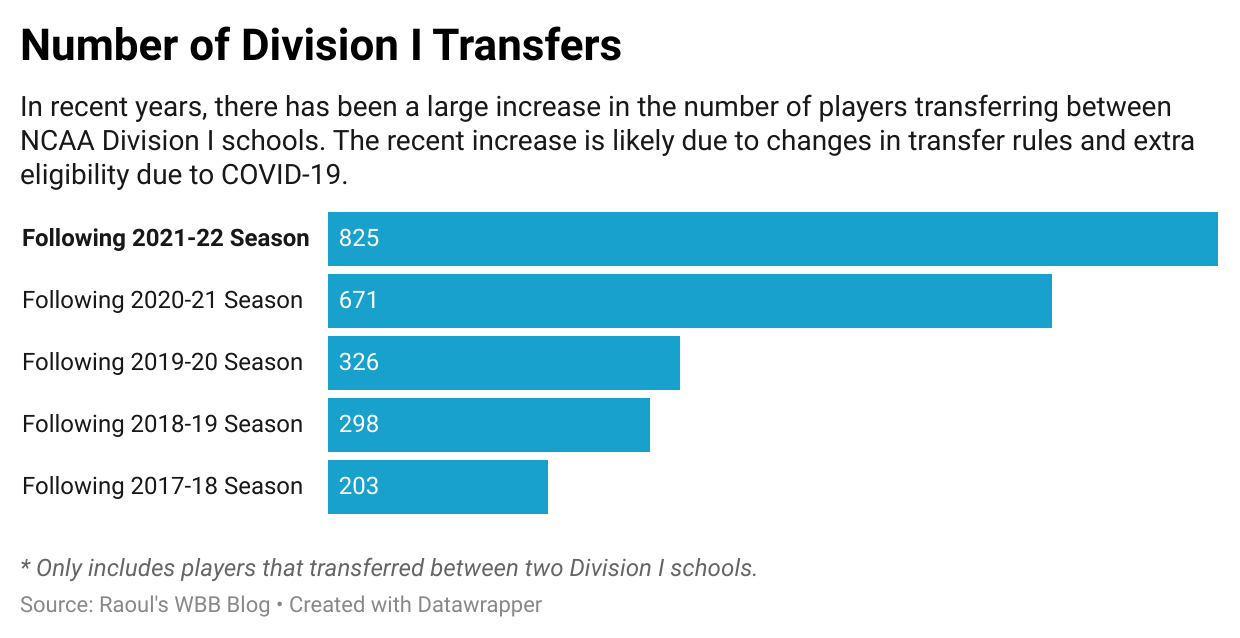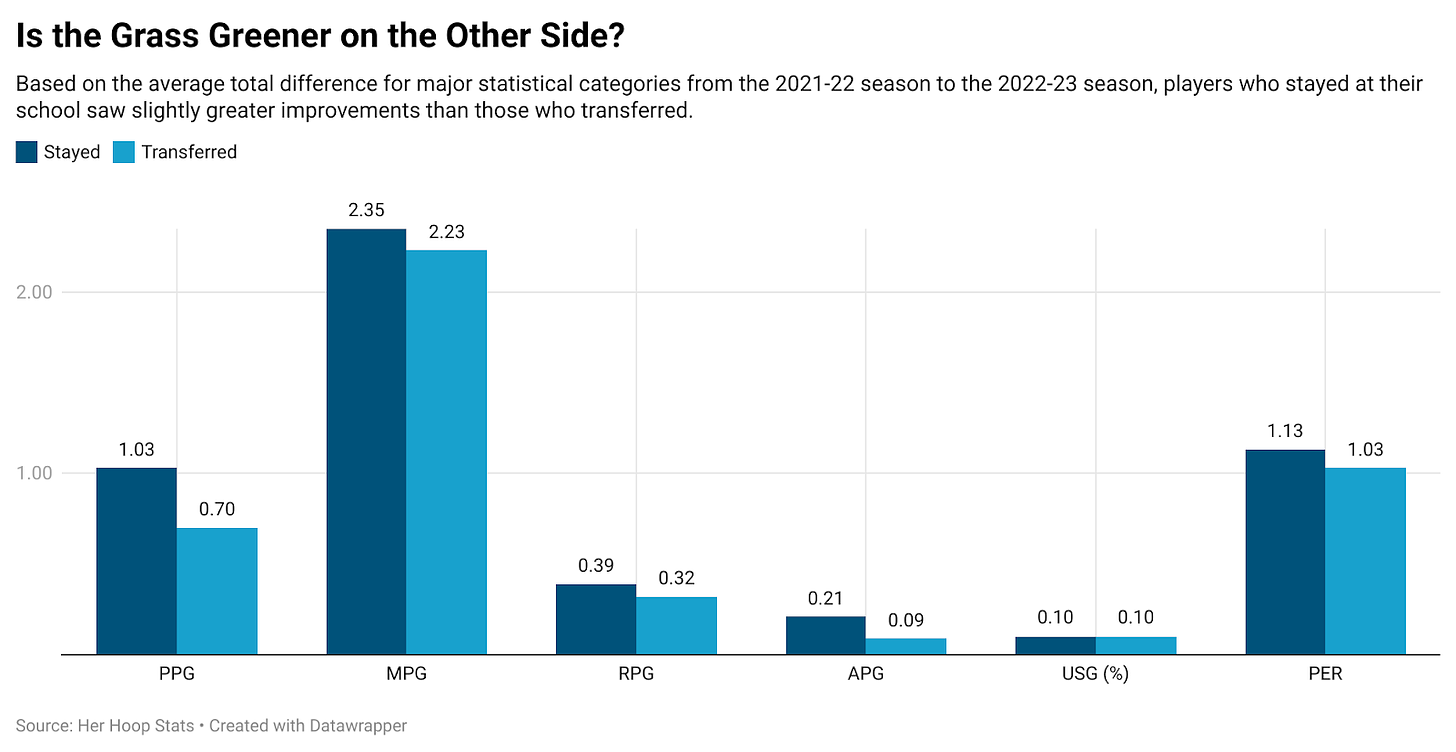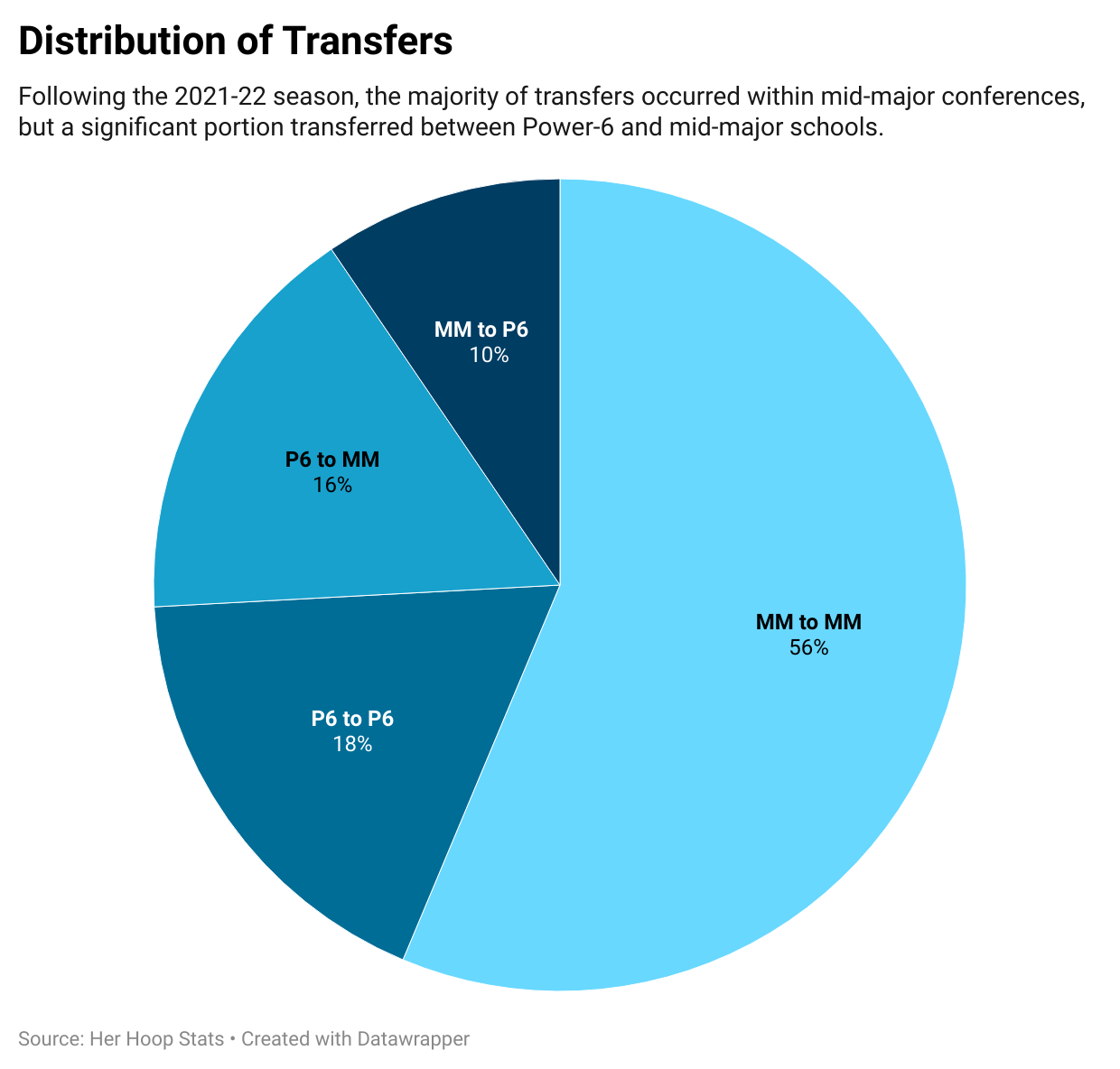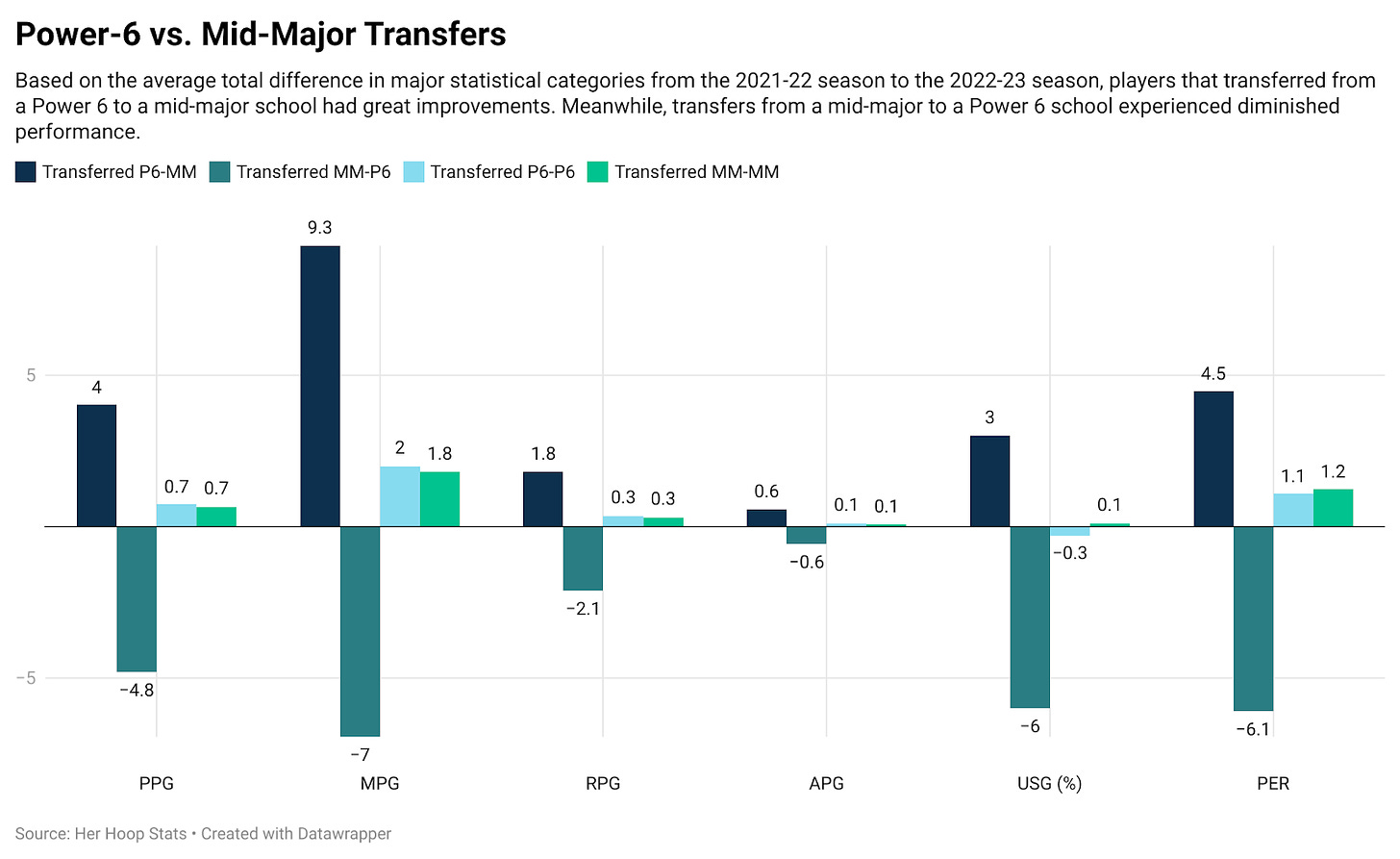Exploring the Effects of Transferring on Individual Performance
A statistical comparison between transfers and non-transfers.
Thanks for reading the Her Hoop Stats Newsletter. If you like our work, be sure to check out our stats site, our podcast, and our social media accounts on Twitter, YouTube, Facebook, and Instagram. You can also buy Her Hoop Stats gear, such as laptop stickers, mugs, and shirts!
Haven’t subscribed to the Her Hoop Stats Newsletter yet?
The introduction of new transfer rules in 2021 allows college basketball players a one-time transfer between Division I schools with no redshirt year. These new rules, in combination with the extra eligibility granted due to COVID-19, have resulted in a large increase in players entering the transfer portal. Since the 2017-18 season, the number of Division I transfers has more than quadrupled. With star players like Hailey Van Lith, Lauren Betts, and Aneesah Morrow in the portal this offseason, transfers continue to have a profound impact on the NCAA women’s basketball landscape. As transferring becomes more common, the importance of exploring its impact on player performance grows.
Data Gathering
The Her Hoop Stats reSEARCH function was used to gather data. Cumulative box scores, along with advanced statistics, were queried from the 2021-22 and 2022-23 seasons. Those who played in only one of these two seasons were eliminated from the dataset. Team names from the 2021-22 and 2022-23 seasons were compared to identify transfers. If the team changed, players were classified as transfers. If there was no change, players were classified as non-transfers. Finally, transfers were further divided according to the specific conferences they transferred to and from.
Differences in selected individual statistics between the 2021-22 and 2022-23 seasons were calculated to make comparisons between various groups of players.
Statistical Comparison
Players that chose to transfer following the 2021-22 season had similar averages in most major statistical categories during the 2021-22 season as those who stayed at their original school. In order to determine whether transferring led to an improvement in on-court performance, we looked at how players who transferred following the 2021-22 season performed compared to those who stayed at their school.
On average, both groups of players exhibited improvements across nearly all statistical categories. After an additional year of collegiate experience, this is not an unexpected result. However, those who stayed at their original school saw slightly greater increases in minutes per game, points per game, rebounds per game, assists per game, and player efficiency rating (PER) compared to transfers. Possible explanations for these differences include the difficulty of adjusting to a new system or coaches giving preference to players who have been with their program for longer.
Another consideration is how transferring between mid-major and Power-6 conferences influences player performance. There was a significant amount of player exchange between these two levels, as 10% of transfers went from a mid-major to a Power-6 conference and 16% of transfers went from a Power-6 to a mid-major conference.
Considering the difference in talent and team caliber between Power-6 and mid-major conferences, the performance of a transfer is influenced by whether the level of competition they regularly encounter increases or decreases. It is reasonable to assume that, all else equal, transferring from a Power 6 to a mid-major conference would lead to an improvement in individual statistical performance, while the reverse scenario would likely result in a decline. To account for transferring between levels, we categorized transfers based on the level to which they transferred and compared how individual statistics changed following the 2021-22 season.
As expected, players who transferred from a Power-6 to a mid-major school saw an increase in production and efficiency. On the flip side, players who transferred from a mid-major school to a Power-6 school saw decreases in production and efficiency. Players who transferred within the mid-major or Power-6 levels saw slight increases in most statistical categories. These findings suggest that the strength of a conference plays a substantial role in how a transfer performs. Therefore, when assessing possible transfer options, coaches and players should consider these outcomes before making a decision.
The impact of transferring on individual performance still remains somewhat unclear. Whether a transfer improves their on-court performance at their new school depends on a variety of factors, including, but not limited to, the level at which they played and are currently playing. Of course, individual statistics are only one measure of the quality of a player’s college basketball experience. Factors such as team success and camaraderie, mental health, and academics are also important. Oftentimes these factors drive players to make the decision to transfer. While transferring may not be a surefire solution for improving individual on-court performance, sometimes the grass truly is greener.
Thanks for reading the Her Hoop Stats Newsletter. If you like our work, be sure to check out our stats site, our podcast, and our social media accounts on Twitter, YouTube, Facebook, and Instagram.








Thank for this. I found it really interesting. I am curious if you did any analysis around age/grade of transfer and if that is a factor.
I am curious what statistics you can uncover regarding the number of students in each of the past couple of years who changed schools, using their extra year as a grad student, who actually earned enough credits to get their graduate degree, before leaving their new school for the WNBA or elsewhere, and the comparison to those who did not.